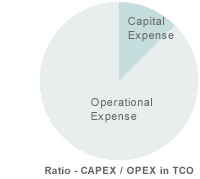History
- 1945
- Conveyor belt production starts
- 1962
- First supply to overseas market
- 1964
- Steel cord conveyor belt production starts
- 1968
- Introduction of CTC* system of ST belt production
* steel Cord Tension Control
- 1982
- Development of Pipe Conveyor Belt
- 1984
- Development of TLS steel cord
- 1988
- Acquires Firestone-Bilbao conveyor belt plant
- 1989
- Apply 2 step method to ST5000 using FEM
- 1995
- Engineering center GEC in Malaysia starts operation
- 1996
- Supply longest single flight conveyor in the world
- 1997
- Development of "HELLO※THEORY"
※High-Technology, Energy efficient, Low safety factor, Long distance overland and Optimized dynamic efficiency
- 1997
- Development of the world strongest belt ST8000
- 1999
- Development of A2000
- 2000
- Renewal of Technical Center for Chemical & Industrial Products
- 2001
- Development of "HYBRID" belt
- 2001
- 1st supply of energy saving belt "Super Low Loss"
- 2007
- Renewal of Research & Development center for Chemical & Industrial Products
- 2010
- Introduction of latest steel cord belt production plant
Philosophy
Our Mission
1. Maximization of Production
Bridgestone's commitment to customer is "Maximization of Production".
We continue to search for ways to…
- Maximize conveyor belt operating life
- Reduce operational cost
- Buildup monitoring and security system to minimize down time loss
- Provide technical support with professional service & know-how
2. Minimization of Total Cost of Ownership

Via Bridgestone's 50 years of experience of servicing conveyor belt users globally, we have established that the CAPEX (Capital Expenditure) relating to the purchase and installation of conveyor belts, accounts for only an insignificant percentage of the Total Cost of Ownership (TCO) related to the overall operating cost on most conveyors.
Bridgestone recognizes it as our business target to realize to minimization of customers' TCO rather than that of CAPEX through Bridgestone products and activities.
All the Bridgestone conveyor belt products and activities have been developed and provided on the basis of this "TCO reduction" concept.


